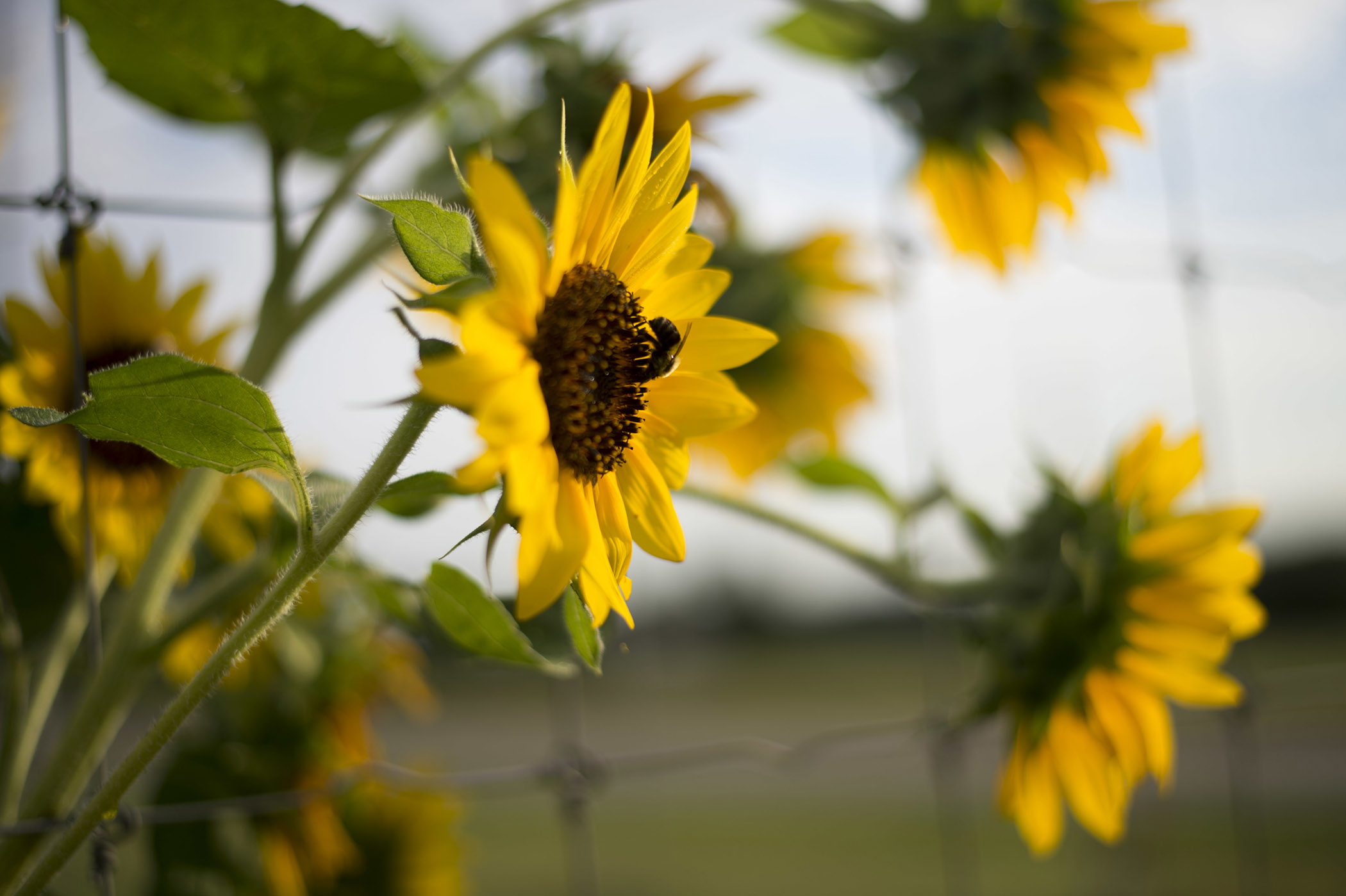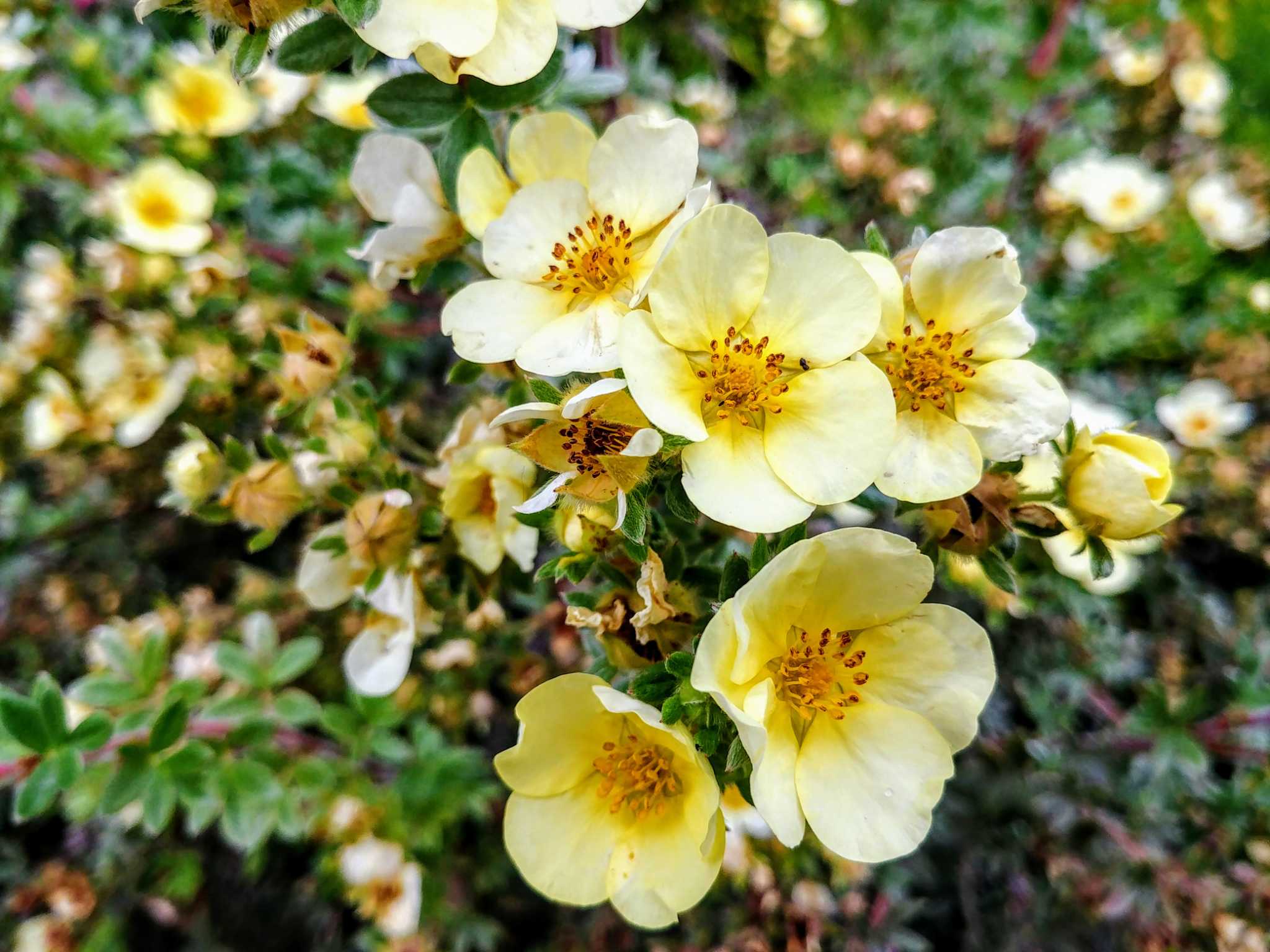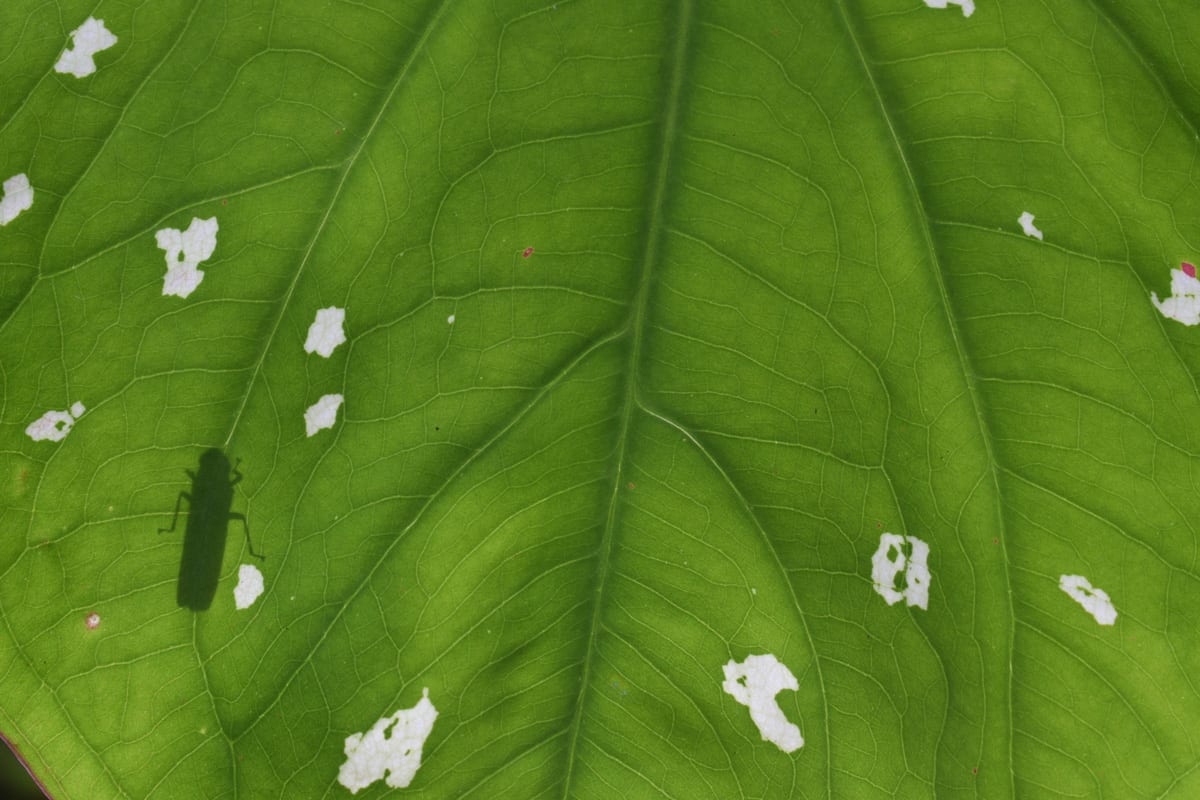Home>Types of Gardening>Ornamental Gardening>When Should I Plant Elephant Ear Bulbs


Ornamental Gardening
When Should I Plant Elephant Ear Bulbs
Published: January 24, 2024
Learn when to plant elephant ear bulbs for a stunning ornamental garden. Discover the best timing and tips for successful growth.
(Many of the links in this article redirect to a specific reviewed product. Your purchase of these products through affiliate links helps to generate commission for Chicagolandgardening.com, at no extra cost. Learn more)
Table of Contents
Introduction
Welcome to the enchanting world of ornamental gardening, where the majestic Elephant Ear plant reigns as a beloved, tropical-inspired addition to any garden or landscape. If you've found yourself captivated by the allure of these striking plants, you're not alone. With their impressive, heart-shaped leaves and dramatic presence, Elephant Ear plants have become a sought-after choice for gardeners looking to make a bold statement.
In this comprehensive guide, we will delve into the art of planting and caring for Elephant Ear bulbs, offering valuable insights into the best practices for nurturing these stunning plants. Whether you're a seasoned gardener or a novice enthusiast, there's always something new to discover about these captivating botanical wonders. So, let's embark on this horticultural journey together, as we uncover the secrets to successfully cultivating Elephant Ear plants and creating a lush, tropical paradise in your own outdoor space.
Throughout this guide, we'll explore the optimal timing for planting Elephant Ear bulbs, the essential steps for planting them, and the ongoing care required to ensure their flourishing growth. By the end of this journey, you'll be equipped with the knowledge and confidence to cultivate thriving Elephant Ear plants, transforming your garden into a vibrant oasis of natural beauty.
So, without further ado, let's dive into the fascinating realm of Elephant Ear plants, where lush foliage, vibrant colors, and a touch of tropical allure await. Whether you're seeking to enhance your garden's visual appeal or simply indulge in the joy of nurturing these remarkable plants, the journey ahead promises to be both enriching and rewarding. Let's explore the world of Elephant Ear bulbs and unlock the secrets to cultivating these mesmerizing botanical treasures.
Understanding Elephant Ear Bulbs
Before delving into the intricacies of planting and caring for Elephant Ear bulbs, it’s essential to gain a deeper understanding of these remarkable botanical structures. Elephant Ear bulbs, also known as corms, serve as the underground storage organs of the Elephant Ear plant, containing vital nutrients and energy reserves that fuel the plant’s growth and development. These bulbs are characterized by their bulbous, rounded shape and are the key to propagating new Elephant Ear plants.
One of the most fascinating aspects of Elephant Ear bulbs is their ability to produce colossal, heart-shaped leaves that can reach impressive sizes, creating a captivating visual display in any garden or landscape. These bulbs are renowned for their rapid growth and their remarkable capacity to thrive in various environments, making them a versatile and resilient choice for gardeners seeking to add a touch of tropical splendor to their outdoor spaces.
Elephant Ear bulbs are also prized for their ornamental value, with many cultivars showcasing an exquisite array of colors and patterns on their leaves, ranging from vibrant greens to deep purples and striking variegations. This diversity in foliage adds a dynamic and visually striking element to garden designs, allowing for endless creative possibilities when incorporating Elephant Ear plants into landscaping projects.
Furthermore, the robust nature of Elephant Ear bulbs enables them to thrive in both containers and garden beds, offering flexibility in terms of placement and design. Whether used as focal points in garden borders, dramatic accents in tropical-themed landscapes, or striking additions to indoor spaces, these bulbs have the potential to elevate the aesthetic appeal of any setting.
By comprehending the unique characteristics and growth patterns of Elephant Ear bulbs, gardeners can gain a profound appreciation for the resilience and beauty of these plants. With this foundational knowledge in mind, we can now explore the optimal timing for planting Elephant Ear bulbs and the essential steps for ensuring their successful establishment and growth.
Best Time to Plant Elephant Ear Bulbs
Timing plays a crucial role in the successful cultivation of Elephant Ear bulbs, as it directly impacts the plant’s ability to establish strong roots and thrive in its environment. The best time to plant Elephant Ear bulbs is during the late spring or early summer, once the threat of frost has passed and the soil has warmed to a temperature conducive to growth. In regions with milder climates, where frost is less of a concern, planting can also take place in early spring to allow for ample time for the bulbs to establish themselves before the onset of winter.
By selecting the optimal planting time, gardeners can provide Elephant Ear bulbs with the ideal conditions for vigorous growth and development. The warmer temperatures and increased sunlight during late spring and early summer create a favorable environment for the bulbs to initiate root growth and begin the process of leaf formation. This timing also aligns with the natural growth cycle of Elephant Ear plants, allowing them to synchronize with the seasonal changes and thrive in the months ahead.
It’s important to note that while Elephant Ear bulbs thrive in warm, balmy conditions, they are sensitive to cold temperatures and can be damaged by frost. Therefore, it’s essential to wait until the risk of frost has passed before planting the bulbs, ensuring their protection from any potential harm. By exercising patience and waiting for the right moment to introduce the bulbs to the soil, gardeners can set the stage for a successful and vibrant display of Elephant Ear foliage in the coming months.
Additionally, planting Elephant Ear bulbs during the recommended timeframe provides them with ample time to establish strong root systems and acclimate to their surroundings before the onset of colder weather. This preparatory period is crucial for the plants’ overall resilience and ability to withstand environmental stressors, ultimately contributing to their long-term health and vitality.
By understanding the significance of timing in the planting process, gardeners can optimize the conditions for Elephant Ear bulbs to flourish, setting the stage for a season of lush growth and breathtaking foliage. With the best planting time in mind, let’s explore the essential steps for planting Elephant Ear bulbs and nurturing them to maturity.
How to Plant Elephant Ear Bulbs
Planting Elephant Ear bulbs is a rewarding endeavor that begins with careful preparation and a thoughtful approach to ensuring the bulbs’ successful establishment. To kickstart this process, it’s essential to select a suitable planting site that offers the ideal growing conditions for these tropical beauties. Whether you’re cultivating Elephant Ear plants in garden beds, containers, or outdoor landscapes, the following steps will guide you through the process of planting Elephant Ear bulbs with precision and care.
Step 1: Selecting the Planting Site
Choose a location with well-draining soil and partial to full sunlight, as Elephant Ear plants thrive in these conditions. Ensure that the chosen site provides ample space for the plants to spread out and grow, as their large, dramatic leaves require room to flourish.
Step 2: Preparing the Soil
Before planting, prepare the soil by incorporating organic matter, such as compost or well-rotted manure, to improve its fertility and texture. This enriches the soil and provides essential nutrients for the bulbs’ initial growth stages.
Step 3: Planting the Bulbs
When planting Elephant Ear bulbs, position them in the soil with the pointed end facing upward and the rounded end resting gently against the earth. Ensure that the bulbs are placed at a depth of approximately 2 to 3 inches, with a spacing of 18 to 24 inches between each bulb to allow for ample growth and spread.
Step 4: Watering and Mulching
After planting, water the bulbs thoroughly to settle the soil and provide essential moisture for their initial growth. Apply a layer of organic mulch, such as straw or bark, around the bulbs to retain soil moisture and regulate temperature, creating an optimal environment for their development.
Step 5: Providing Ongoing Care
Throughout the growing season, monitor the soil moisture levels and water the plants regularly, especially during dry periods. Additionally, consider applying a balanced, water-soluble fertilizer to support the bulbs’ growth and nourishment.
By following these steps and providing attentive care, gardeners can ensure the successful planting of Elephant Ear bulbs, setting the stage for the emergence of lush, tropical foliage that will captivate and enrich any outdoor space. With the bulbs securely nestled in the soil, it’s time to explore the essential practices for caring for Elephant Ear plants and nurturing them to their full potential.
Caring for Elephant Ear Plants
Once the Elephant Ear bulbs have been planted and have begun their journey towards growth and vitality, it’s essential to provide them with the care and attention they need to thrive. Caring for Elephant Ear plants involves a combination of attentive maintenance, strategic watering, and occasional feeding to ensure their continued health and vigor. By implementing the following practices, gardeners can foster the optimal conditions for these stunning plants to flourish and grace the garden with their lush foliage.
Watering
Elephant Ear plants thrive in moist soil and benefit from consistent watering, especially during dry spells or periods of prolonged heat. However, it’s crucial to strike a balance, as overwatering can lead to root rot and other issues. Aim to keep the soil evenly moist but not waterlogged, allowing excess water to drain away to prevent waterlogged conditions.
Soil and Fertilization
Regularly monitor the soil to ensure it remains well-draining and rich in nutrients. Consider applying a balanced, water-soluble fertilizer every 4-6 weeks during the growing season to provide the plants with essential nutrients for robust growth. Opt for a fertilizer specifically formulated for ornamental foliage plants to support the development of vibrant, healthy leaves.
Pruning and Maintenance
As Elephant Ear plants grow, they may produce offshoots or side shoots that can be removed to maintain the desired size and shape of the plant. Pruning these offshoots can help direct the plant’s energy towards the development of the main foliage, promoting a more robust and visually appealing display.
Protection from Frost
In regions where frost is a concern, it’s important to protect Elephant Ear plants from the potential harm caused by cold temperatures. Prior to the onset of winter, consider applying a layer of mulch around the base of the plants to insulate the soil and protect the bulbs from freezing. In colder climates, lifting the bulbs and storing them indoors during winter may be necessary to ensure their survival.
Pest and Disease Management
Monitor the plants for signs of pests or diseases, such as aphids or fungal issues, and take prompt action to address any issues that arise. Regular inspection and proactive pest management can help safeguard the plants from potential threats and preserve their health and vitality.
By implementing these essential care practices, gardeners can nurture their Elephant Ear plants to their full potential, creating a lush and vibrant display of tropical foliage that enriches the garden with its captivating beauty. With attentive care and a touch of horticultural expertise, these remarkable plants are sure to thrive and captivate all who encounter them.
Conclusion
As we conclude this horticultural journey into the world of Elephant Ear bulbs and plants, it’s evident that these botanical wonders hold a special allure for gardeners and enthusiasts alike. From their striking foliage and tropical ambiance to their resilience and adaptability, Elephant Ear plants have carved out a place of distinction in the realm of ornamental gardening, captivating hearts and imaginations with their lush beauty.
By understanding the optimal timing for planting Elephant Ear bulbs and the essential steps for their successful establishment, gardeners can set the stage for a season of vibrant growth and dramatic foliage. The late spring and early summer emerge as the ideal windows for planting, offering the bulbs the warmth and sunlight they need to flourish and thrive in their surroundings.
Furthermore, the careful process of planting and nurturing Elephant Ear bulbs paves the way for the emergence of lush, tropical foliage that adds a touch of exotic splendor to any outdoor space. With strategic care, attentive watering, and periodic feeding, these plants can reach their full potential, gracing the garden with their captivating presence and vibrant hues.
As we’ve explored the art of caring for Elephant Ear plants, it’s clear that dedication and a keen eye for maintenance are essential for preserving the health and vitality of these botanical treasures. From strategic pruning to proactive pest management, each aspect of care contributes to the plants’ overall well-being, ensuring a flourishing display of tropical elegance.
In essence, the journey of cultivating Elephant Ear plants is a testament to the transformative power of horticulture, where the convergence of timing, care, and appreciation for nature yields a spectacle of natural beauty. Whether adorning garden beds, accentuating landscapes, or adding a tropical touch to indoor spaces, Elephant Ear plants stand as a testament to the artistry and wonder of ornamental gardening.
As you embark on your own horticultural endeavors, may the knowledge and insights gained from this guide inspire you to cultivate thriving Elephant Ear plants and create a lush, tropical paradise in your own outdoor sanctuary. With each leaf unfurling and each bulb taking root, you’ll witness the enchanting beauty of these plants as they flourish and transform their surroundings, enriching the landscape with their majestic presence.
So, as you venture forth into the world of ornamental gardening, may the allure of Elephant Ear plants continue to captivate and inspire, inviting you to embrace the art of nurturing these botanical treasures and reveling in the splendor they bring to your garden and beyond.




